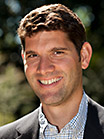Author Archive: Kenny Lee
Implementing Consumption-Based Fixed Rates in Davis, Calif.
Authors: Spang, Edward S.; Loge, Frank J.; Abernathy, William; Dove, Douglas R.; Tseng, Catherine; Williams, Matt
Publication: American Water Works Association – July 2015
Article Link
Abstract: Water utilities in California must promote water conservation, yet have a limited suite of rate structures that can be used to charge for water. Under traditional rate structures, a strong price-based conservation signal can produce conservation yet result in revenue instability. California public water utilities face additional challenges as a result of the standards for reporting, accounting, and proportionality under Proposition 218. One solution for resolving these structural tensions between conservation and fiscal solvency in a Proposition 218 environment is the implementation of consumption-based fixed rates (CBFR). This article describes the design and implementation of CBFR in Davis, Calif.
Consumption-Based Fixed Rates: Harmonizing Water Conservation and Revenue Stability
Authors: Edward Spang, Sara Miller, Matt Williams, and Frank J. Loge
Publication: American Water Works Association – March 2015
Article Link
Abstract: Water utilities struggle with the need to promote water conservation while maintaining financial solvency – a common challenge referred to as the “new normal.” However, under typical cost and revenue structures, water utilities experience significant revenue shortfalls when water use lags behind projected customer consumption (either by conservation or other factors). Subsequently, water providers are obligated to raise rates more frequently and/or more dramatically than originally anticipated. This problem arises primarily when the fixed and variable portions of utility costs are not aligned with the fixed and variable portions of revenue. This article presents a new water-pricing mechanism – consumption-based fixed rates – that harmonizes costs and revenues yet still promotes conservation through the innovative inclusion of volumetric fixed charges. As such, consumption-based fixed rates represent a potentially useful solution for water utilities to effectively balance conservation and revenue stability in an equitable and sustainable manner.
A High-Resolution Approach to Mapping Energy Flows through Water Infrastructure Systems
Authors: Edward S. Spang and Frank J. Loge
Publication: Journal of Industrial Ecology – March 2015
Article Link
Abstract: Using data from the water service area of the East Bay Municipal Utility District in Northern California, we develop and discuss a method for assessing, at a high resolution, the energy intensity of water treated and delivered to customers of a major metropolitan water district. This method extends previous efforts by integrating hourly data from supervisory control and data acquisition systems with calculations based on the actual structure of the engineered infrastructure to produce a detailed understanding of energy use in space and time within the territory of a large-scale urban water provider. We found significant variations in the energy intensity of delivered potable water resulting from seasonal and topographic effects. This method enhances our understanding of the energy inputs for potable water systems and can be applied to the entire delivery and postuse water life cycle. A nuanced understanding of water’s energy intensity in an urban setting enables more intelligent, targeted efforts to jointly conserve water and energy resources that take seasonal, distance, and elevation effects into account.
Multiple metrics for quantifying the intensity of water consumption of energy production
Author: Edward S. Spang
Publication: Environmental Research Letters – October 2014
Article Link
Abstract: Discussion of the environmental implications of worldwide energy demand is currently dominated by the effects of carbon dioxide (CO2) emissions on global climate. At the regional scale, however, water resource challenges associated with energy systems are a growing concern. This paper, based on an inventory of national energy portfolios, posits an indicator-based framework for characterizing regional energy portfolios’ relative water intensity. These calculations extend upon a previous paper that established a method for calculating the national water consumption of energy production (WCEP) at the global level. Intensity indicators are based on normalizing the WCEP results with a set of additional indicators (including population, gross domestic product, total energy production, and regional water availability). The results show great variability in water consumption across nations, as well as across the various water intensity measures that were applied. Therefore, it is best to apply this full suite of indicators to each country to develop an integrated understanding of the intensity of water use for energy across countries.
The water consumption of energy production: an international comparison
Author: Edward S. Spang
Publication: Environmental Research Letters – October 2014
Article Link
Abstract: Producing energy resources requires significant quantities of fresh water. As an energy sector changes or expands, the mix of technologies deployed to produce fuels and electricity determines the associated burden on regional water resources. Many reports have identified the water consumption of various energy production technologies. This paper synthesizes and expands upon this previous work by exploring the geographic distribution of water use by national energy portfolios. By defining and calculating an indicator to compare the water consumption of energy production for over 150 countries, we estimate that approximately 52 billion cubic meters of fresh water is consumed annually for global energy production. Further, in consolidating the data, it became clear that both the quality of the data and global reporting standards should be improved to track this important variable at the global scale. By introducing a consistent indicator to empirically assess coupled water–energy systems, it is hoped that this research will provide greater visibility into the magnitude of water use for energy production at the national and global scales.
Offsetting water conservation costs to achieve net-zero water use
Authors: Kendra C. Olmos and Frank J. Loge
Publication: American Water Works Association – February 2013
Article Link
Abstract: Achieving net-zero water use (in which annual potable water use is no greater than annual rainfall) and achieving reasonable payback periods for water conservation measures were investigated for a proposed mixed-use housing development in Davis, Calif. Water efficiency scenarios were analyzed for indoor water use and landscape watering, along with the use of graywater and rainwater on landscaping. Potential cost savings were found in both water utility reductions associated with water conservation and energy efficiency associated with decreases in hot water use. The feasibility of selling carbon offset credits in California’s new cap-and-trade program by reducing greenhouse gas emissions associated with the water/energy nexus was also investigated. Results indicated the feasibility of achieving net-zero water use at the scale of a single-family residence and the entire community through indoor and landscaping water conservation measures without the need for graywater or rainwater reuse.




